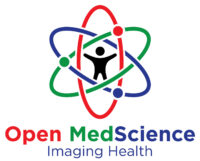Summary: Medical imaging has long been a vital tool for diagnosis, but its role in managing chronic diseases has expanded significantly. Conditions such as arthritis, cardiovascular disease, and diabetes now rely on imaging not just at diagnosis but throughout the course of treatment. Imaging allows for continuous monitoring, more precise interventions, and tailored treatment plans. This article examines how advancements in imaging technology support long-term care, enhance patient outcomes, and deepen our understanding of chronic diseases. It also considers the future of imaging in personalised medicine and integrated healthcare systems.
Keywords: chronic disease, medical imaging, arthritis monitoring, cardiovascular imaging, diabetes complications, personalised treatment.
Beyond Diagnosis
Medical imaging has traditionally served as a gateway to diagnosis, revealing fractures, tumours, or organ dysfunctions. However, over the past two decades, its function has expanded, particularly in the context of chronic diseases. These long-term conditions, which often progress slowly but carry significant morbidity and mortality, greatly benefit from the regular, non-invasive insights that imaging provides. With technological advancements such as high-resolution MRI, CT scans, PET imaging, and ultrasound, clinicians are now able to detect subtle changes, track disease progression, and optimise treatment strategies in a once inconceivable way.
This shift from a purely diagnostic role to a comprehensive management tool has redefined patient care, particularly in conditions such as arthritis, cardiovascular disease, and diabetes, where early intervention and ongoing monitoring can significantly impact outcomes.
Arthritis: Visualising Inflammation and Joint Damage
Arthritis, particularly rheumatoid arthritis (RA) and osteoarthritis (OA), exemplifies how imaging has revolutionised disease monitoring. RA is an autoimmune disorder marked by synovial inflammation and joint erosion, often progressing invisibly before symptoms become severe. Conventional radiography was once the cornerstone of imaging in arthritis, but it primarily detected damage after it had occurred.
The advent of musculoskeletal ultrasound and MRI has shifted the focus towards early detection and ongoing surveillance. Ultrasound, especially when combined with power Doppler, allows clinicians to visualise synovial thickening and increased vascularity—markers of active inflammation. MRI goes a step further, detecting bone marrow oedema and early erosions, which are strong predictors of disease progression.
Routine imaging now helps rheumatologists adjust immunosuppressive therapies with greater precision. By detecting subclinical inflammation, imaging can signal a potential flare even when symptoms are controlled, enabling early therapeutic intervention. This approach not only preserves joint function but also reduces reliance on higher-risk medications and avoids irreversible damage.
In osteoarthritis, imaging assists in evaluating cartilage loss and joint space narrowing. Although symptoms and physical function are traditionally used to monitor OA, advanced imaging offers a more nuanced understanding of structural changes, guiding decisions about surgical referral, physiotherapy, or intra-articular injections.
Cardiovascular Disease: A Window into the Vascular System
Cardiovascular disease (CVD) remains the leading cause of death globally, and imaging is central to both its prevention and management. Unlike acute conditions where treatment follows obvious symptoms, CVD often advances silently. Imaging fills this gap by providing early visual evidence of disease and supporting long-term risk management.
Echocardiography, cardiac MRI, CT coronary angiography, and nuclear imaging each play a unique role. Echocardiography is routinely used to assess cardiac structure and function, helping in the monitoring of heart failure, valvular disease, and cardiomyopathies. Its portability and lack of ionising radiation make it ideal for frequent use in both inpatient and outpatient settings.
Cardiac MRI provides detailed images of myocardial tissue, revealing fibrosis, perfusion deficits, and inflammation within the heart. This is particularly useful in monitoring the cardiotoxic effects of chemotherapy in cancer survivors and in assessing myocarditis in autoimmune disorders.
CT coronary angiography has gained prominence as a non-invasive method for assessing coronary artery disease. It can quantify calcium scores and detect non-obstructive plaque, offering a powerful tool for identifying patients at high risk of myocardial infarction. When incorporated into preventive cardiology strategies, imaging can motivate lifestyle changes and support decisions regarding statins or antihypertensives.
In patients with established CVD, imaging also plays a role in procedural planning and follow-up. For instance, after stent placement or bypass surgery, CT or MRI can assess graft patency, while echocardiography evaluates cardiac function. These repeated assessments enable clinicians to make data-driven decisions about ongoing therapy.
Diabetes: Monitoring Complications with Precision
Diabetes is a chronic condition with widespread systemic effects. Its complications—retinopathy, nephropathy, neuropathy, and cardiovascular disease—develop over time and often present silently. Imaging is essential for the early detection, targeted intervention, and monitoring of the progression of these complications.
One of the most impactful uses of imaging in diabetes is in screening for diabetic retinopathy. Retinal photography, often integrated into annual diabetic reviews, allows for early detection of microvascular changes that precede vision loss. Advances in optical coherence tomography (OCT) now enable cross-sectional imaging of the retina, offering even greater sensitivity and facilitating earlier treatment with laser therapy or intravitreal injections.
Diabetic foot disease, a leading cause of non-traumatic amputations, benefits from imaging in the assessment of osteomyelitis and soft tissue infections. MRI is particularly sensitive in distinguishing between cellulitis and bone involvement, which is critical in surgical planning and antibiotic stewardship.
Vascular imaging also plays a growing role in diabetes management. Peripheral arterial disease is common among diabetic patients, and Doppler ultrasound or CT angiography can detect reduced blood flow in the lower limbs, prompting revascularisation procedures or intensified medical therapy.
Furthermore, imaging plays a crucial role in supporting renal care in diabetes. Ultrasound is frequently used to monitor kidney size and detect obstruction or structural abnormalities. As diabetic nephropathy progresses, regular imaging helps differentiate it from other causes of renal impairment, guiding appropriate treatment or referral for renal replacement therapy.
Integration of Imaging in Personalised Care
As healthcare systems shift towards personalised and preventive medicine, imaging has become a cornerstone of individualised care plans. Chronic diseases do not progress uniformly; two patients with the same diagnosis may follow very different clinical courses. Imaging enables clinicians to visualise and respond to these differences in real-time.
For instance, in arthritis, imaging can demonstrate which patients are achieving remission at a structural level, not just symptomatically. In cardiovascular care, imaging can distinguish between stable and vulnerable plaque, refining the use of statins or antiplatelet agents. In diabetes, subtle changes on retinal imaging or vascular scans can trigger preventive interventions before clinical deterioration.
This personalised approach improves outcomes and optimises resource use. Rather than escalating treatment based solely on symptoms, clinicians can use imaging to guide rational and timely adjustments to treatment. It also supports shared decision-making, as patients can see the impact of their disease and the benefits of therapy, reinforcing adherence and engagement.
Technological Innovations and the Future
The future of imaging in chronic disease management is closely tied to innovation. Artificial intelligence (AI) and machine learning are transforming the way images are interpreted. Algorithms trained on large datasets can detect patterns and predict outcomes with remarkable accuracy, enabling radiologists and clinicians to make faster and more accurate decisions.
Portable imaging devices, such as handheld ultrasound scanners, are increasing accessibility, particularly in primary care or rural settings. These tools can bring advanced monitoring into the community, supporting earlier intervention and reducing hospital admissions.
Moreover, functional imaging techniques—such as PET/MRI—are beginning to unravel the complex mechanisms of various diseases. These tools go beyond structure, offering insights into metabolism, inflammation, and receptor activity. For example, in cardiovascular disease, PET imaging can identify active atherosclerotic plaque before it ruptures, potentially averting heart attacks. In arthritis, molecular imaging may soon help distinguish between different inflammatory pathways, thereby guiding targeted biological interventions.
The integration of imaging with electronic health records and telemedicine platforms is another promising area. This will enable multidisciplinary teams to collaborate remotely, reviewing images and adjusting care plans in real-time. Such integration supports continuity of care, particularly for patients with multiple comorbidities.
Ethical Considerations and Cost Implications
While imaging offers immense benefits, its expanded use raises ethical and financial questions. Overuse can lead to incidental findings, patient anxiety, and unnecessary interventions. Therefore, imaging must be used judiciously, guided by clinical needs and evidence-based protocols.
There is also the matter of equity. Advanced imaging technologies are not equally available across all regions, and disparities in access can exacerbate health inequalities. Ensuring that imaging is used as part of a broader public health strategy—rather than a privilege of the few—is essential to realising its full potential.
From a financial standpoint, although imaging incurs upfront costs, it may reduce long-term expenditure by preventing complications, avoiding hospitalisation, and improving treatment efficiency. Health economists increasingly support its role as a cost-effective tool when integrated within chronic care pathways.
Conclusion
Medical imaging has evolved from a static, one-time snapshot into a dynamic, integral component of chronic disease management. In conditions such as arthritis, cardiovascular disease, and diabetes, it not only enables early diagnosis but also facilitates continuous monitoring, timely interventions, and personalised treatment strategies.
As technologies advance and become more accessible, imaging is poised to become even more central to how we understand, monitor, and treat chronic diseases. Its future lies not only in sharper images or faster machines but in its integration with other data streams—genomics, lifestyle, and clinical outcomes—to truly tailor care to the individual.
In managing chronic disease, seeing more means doing more, and ultimately achieving better outcomes for patients across the healthcare spectrum.
Disclaimer
The content provided in this article is for informational purposes only and is not intended as medical advice, diagnosis, or treatment. While every effort has been made to ensure the accuracy of the information presented, Open Medscience does not guarantee its completeness or suitability for any particular purpose. Readers are advised to consult qualified healthcare professionals regarding any medical condition or treatment discussed in this article. The views expressed are those of the authors and do not necessarily reflect those of Open Medscience or its affiliates. Use of this content is at the reader’s own discretion and risk.
You are here: home » diagnostic medical imaging blog »



